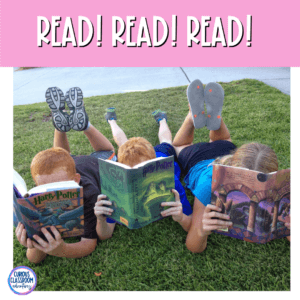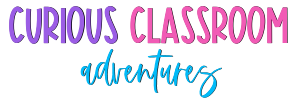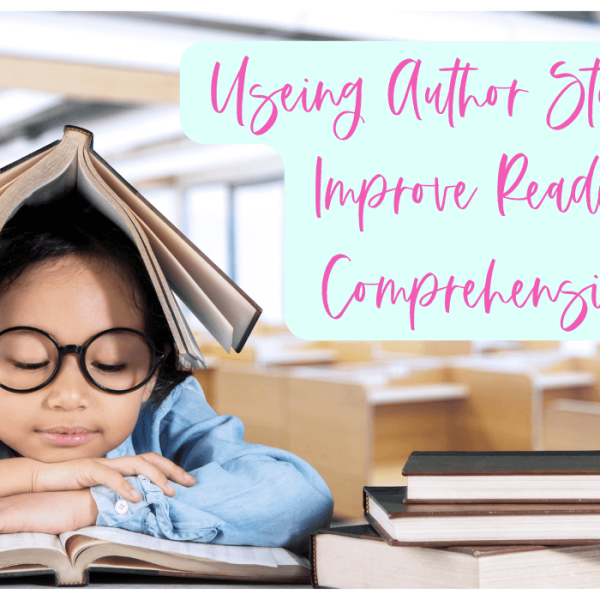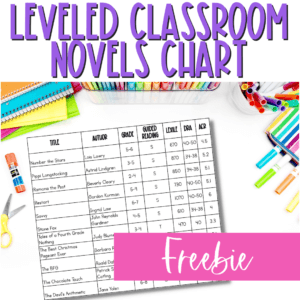As teachers, we know that one of the best ways to get our students engaged in reading and improve reading comprehension is to connect them with authors they love. Once they’ve found an author they enjoy, we can encourage them to read more books by that author and help them see how their understanding of the author’s work deepens with each new book. This is what we call an “author study.”
An author study is more than just reading a lot of books by the same person. It’s an opportunity for students to really dig into an author’s body of work, notice patterns and commonalities, and develop a deep understanding of what makes that author’s writing unique. Ultimately, doing an author study can help students better understand not just the books they’re reading, but also boost their overall reading comprehension.
How to Do an Author Study with Your Students
Ready to get started? Here are some tips for incorporating author studies into your classroom:
Pick an age-appropriate collection for your author study:
Start by thinking about which authors your students are already familiar with and enjoy reading. From there, you can narrow down the list based on age appropriateness and the types of books you want your students to be reading. For example, if you’re looking for upper elementary authors that write whimsical adventure stories, try Roald Dahl. If you’re looking for a heartfelt tale full of great imagery try National Book Award winner Kate DiCamillo.
If you’re not sure, who to choose or what reading level your favorite children’s authors are writing at, you are sure to find a good choice in this leveled list of novels free download.
Get organized:
Once you’ve selected an author, it’s time to start gathering resources. Begin by making a list of all the books by that author that you can find in your school or public library. Then, create a bibliography of those titles so you can keep track of which ones you’ve read and which ones you still need to read. Finally, gather any other resources you might need, like these done-for-you novel studies. Once you have everything in one place, it will be much easier to keep track of your progress and plan your lessons.
Read, read, read!:
Now it’s time for the fun part of an author study—starting reading! As you read each book, work with your class to take note of recurring themes, characters, settings, etc. You might want to create a class anchor chart for each book where you jot down your observations and evidence from the text on.
Also, pay attention to your own and your students’ reactions as you read; what did you like or not like about the book? What did it make you think or feel? These insights will be helpful when it comes time to discuss the books with your students.

Do a little biographical research on the author:
Chances are good that the book you’re reading was written by an individual with his or her own unique perspective. By learning about the author’s background, interests, and writing style, you can get a better sense of what he or she was trying to communicate through the book.
In some cases, this may even help you understand parts of the book that were confusing. For example, if students read about Grace Lin’s travels to China to connect with her own heritage, it might give them insight into why she includes certain stories or pictures in Where the Mountain Meets the Moon and the other books in that collection.
Through a little author research, students might also find things they have in common with authors. For example, your dyslexic students may enjoy reading stories by dyslexic authors like Henry Winkler and his Hank the Cowdog series.
Look for commonalities in the stories:
Once you’ve finished reading all (or most) of the books on your list, it’s time to start looking for patterns. Are there certain themes that seem to come up again and again? Are there common characters or settings? What do all these elements have in common? Asking these types of questions during your author study will help your students start to form a deep understanding of not just the individual books but also the author’s larger body of work. Now those are major reading comprehension skills!

Doing an author study with your students is a great way to help them connect with the books they’re reading, develop a deeper understanding of what makes good writing good, and boost their reading comprehension skills at the same time. Plus, it’s super fun! So next time your students are struggling to find a book they’ll enjoy reading, consider suggesting they do an author study on one of their favorite authors.


